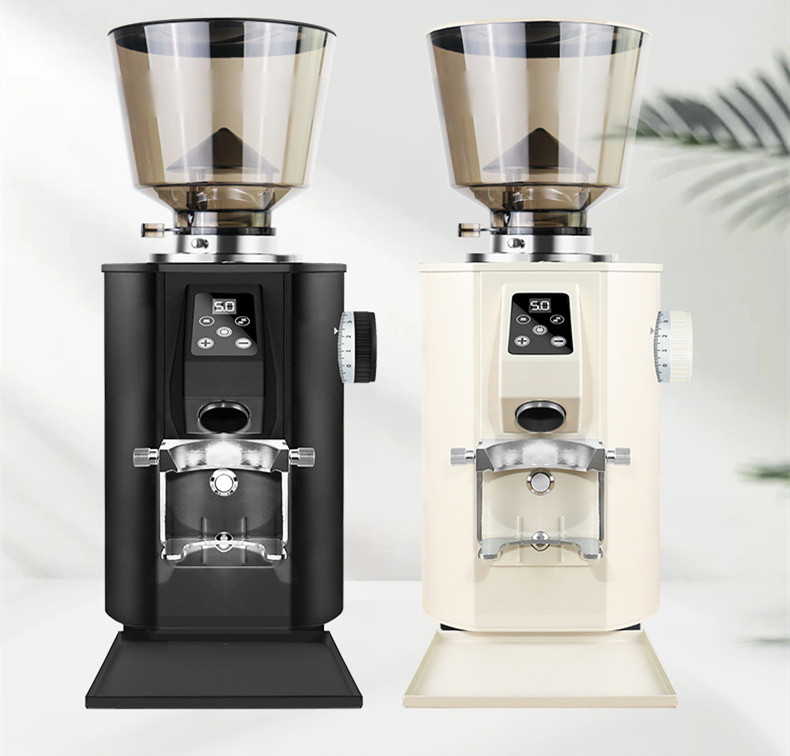How to Pair Coffee Grinders with Different Brewing Methods for Optimal Results
Matching Grind Size to Brewing Equipment
The grind size required for each brewing method depends on how water interacts with coffee grounds. Coarser grinds allow water to flow freely, while finer grinds create resistance, slowing extraction. Adjusting grind size ensures balanced flavor and prevents over- or under-extraction.
- Espresso Machines: Espresso relies on high pressure to extract flavors in 25–30 seconds. A fine grind, similar to powdered sugar, is essential to build resistance against the water flow. If shots are too fast (sour or weak), grind finer; if too slow (bitter or chalky), grind coarser.
- French Press: This method uses a metal mesh filter, allowing oils and fine particles to remain in the cup. A coarse grind, resembling sea salt, prevents sediment while ensuring a full-bodied brew. Grinding too fine will result in a gritty texture and over-extraction.
- Pour-Over (e.g., Hario V60, Chemex): These devices rely on gravity for water flow, requiring a medium grind (like sand) for even extraction. A finer grind enhances clarity and acidity, while a coarser grind emphasizes body. Adjust based on the filter’s thickness—thicker filters (Chemex) need a slightly coarser grind to avoid clogging.
Adapting Grind Consistency for Manual vs. Automatic Brewers
Manual brewing methods (e.g., AeroPress, pour-over) demand precise grind consistency to control extraction, while automatic brewers (e.g., drip coffee makers) are more forgiving but still benefit from uniformity.
- Manual Brewers: Devices like the AeroPress or Moka pot require fine-tuning grind size and distribution. For AeroPress, a medium-fine grind (similar to espresso but slightly coarser) works well for a 1–2-minute steep. Inconsistent grinds can lead to channeling, where water bypasses grounds unevenly. Use a burr grinder for uniformity and tap the brewer gently after adding grounds to settle them evenly.
- Automatic Drip Coffee Makers: These machines often use flat-bottom filters, which perform best with a medium grind. However, some models with cone filters may need a medium-fine grind. If the coffee tastes weak, try a finer grind; if bitter, switch to coarser. Avoid overfilling the filter basket, as compacted grounds restrict water flow and cause uneven extraction.
- Cold Brew: Cold brew’s long steeping time (12–24 hours) extracts flavors slowly, so a coarse grind (like raw sugar) is ideal. Finer grinds will over-extract, making the brew bitter and muddy. Stir the grounds gently during steeping to ensure even saturation, and strain through a fine-mesh sieve or cloth to remove sediment.
Adjusting Grind Settings for Specialty Brewing Techniques
Certain brewing methods, such as espresso variants or hybrid devices, require unique grind adjustments to highlight specific flavor profiles.
- Espresso Variants (e.g., Ristretto, Lungo): Ristretto shots (shorter extraction) need an even finer grind to slow water flow and concentrate flavors, while lungo shots (longer extraction) require a slightly coarser grind to avoid bitterness. Experiment in small increments (e.g., 0.25 notch adjustments on a grinder) to find the sweet spot.
- Siphon Brewers: These devices combine immersion and vacuum extraction, benefiting from a medium-fine grind. The grind should allow water to pass through the grounds during the draw-down phase without clogging the filter. If the brew tastes hollow, grind finer; if harsh, grind coarser.
- Turkish Coffee: This traditional method uses an ultra-fine grind (powder-like) to create a thick, syrupy texture. The grounds are boiled with water and sugar, so a very fine grind is necessary to dissolve properly. Use a manual grinder with adjustable settings or a dedicated Turkish coffee mill for best results.
Common Pitfalls to Avoid When Pairing Grinders with Brewers
Using the Wrong Grind for the Filter Type
Paper filters trap fines, so a medium grind works well for pour-over, while metal filters (e.g., French press) require a coarser grind to prevent clogging. Using a fine grind with a metal filter will result in a gritty cup, while a coarse grind with a paper filter may under-extract.
Ignoring Bean Freshness and Roast Level
Freshly roasted beans (within 1–2 weeks) are more volatile and may require a slightly coarser grind to account for CO2 release, which can disrupt extraction. Light roasts are denser and need a finer grind to extract their acidic notes, while dark roasts are more porous and extract faster, demanding a coarser grind to avoid bitterness.
Neglecting Grinder Calibration
Burr grinders can drift out of calibration over time, leading to inconsistent grind sizes. Regularly check and recalibrate your grinder by grinding a small sample and inspecting the particle distribution. If using a manual grinder, ensure the burrs are tightened securely to prevent wobbling, which creates uneven grinds.
By tailoring grind size, consistency, and settings to your brewing method, you can unlock the full potential of your coffee beans. Small adjustments based on equipment, bean characteristics, and personal taste preferences will elevate your coffee from ordinary to exceptional.


